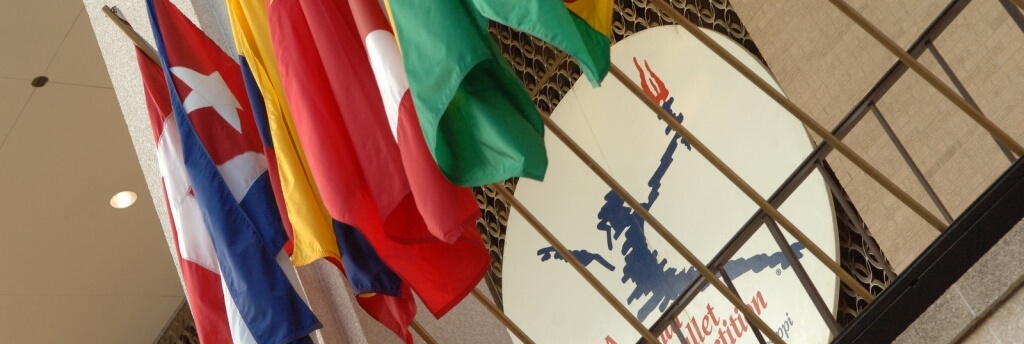THE crowd was small but the cheers were loud.
When 25-year-old Candice Adea and her partner Jean Marc Cordero, both principal dancers of Ballet Philippines arrived home, they were greeted by a small but boisterous crowd.
It wasn’t a Manny Pacquiao type of welcome or even a celebrity kind of reception. Maybe 10 people were on hand at the Ninoy Aquino International Airport in Manila but it was good enough for Adea and Cordero, two young individuals trying to put a spotlight in their art form in a country where it’s largely ignored.
Adea recently became the first Filipina to win first prize in the Senior Women’s Division at the Helsinki International Ballet Competition, one of the most prestigious ballet competitions in the world. Her partner, Jean Marc Cordero, was a semi-finalist. He received a Special Jury Award for Best in Partnering Technique.
As one blogger who watched Adea’s performance of the Diana and Acteon pas de deux with Cordero and Aku, a contemporary dance piece choreographed by Alden Lugnasin, described it:
“Magical was no other than my early favorite, Candice Adea. Again. She danced her Diana and Actéon variation with such technical purity, exquisite expression and warmth,” wrote Johannan Balettikassi in the ballet blog, Pointe Til You Drop.
“I think most of the audience has already fallen in love with her! Adea and her now non-competing partner had also one of the scariest over-head lifts, which had one of my back-stage friends praying for their safety! If Ms. Adea doesn’t place high, I should be very surprised,” she added.
To Adea, this is just another remarkable moment in her career.
The 25-year-old Adea is probably the most decorated ballet dancer in Philippine history.
Beginnings
The Filipina began ballet at the age of four and has grown every step, every pointe of the way.
According to her bio, she started under the tutelage of Pamela Ortiz-Bondoc and Josette Salang. She further continued with Brezhnev Larlar, a renowned singer, dancer and choreographer.
By the time she was nine, Adea had earned a full scholarship at the Cultural Center of the Philippines (CCP) Dance School and trained there until she entered the Philippine High
School for the Arts.
She went on to further academic success including graduating with the Artistic Excellence Award and the Maria Makiling Scholarship Award, and earning a Bachelor of Performing Arts Major in Dance degree from De La Salle—College of Saint Benilde.
Throughout her ballet career, she has studied under the country’s top ballet luminaries like Nonoy Froilan, Victor Ursabia, Ronilo Jaynario and Veronique Duma-Berdin.
A promising career
At the age of 13, Adea showed remarkable promise. In her first major competition at the Asia-Pacific Ballet Competition in Tokyo, Japan, she made it to the semi-finals. Three years later, she was a finalist.
She joined Ballet Philippines in 2004 and has become one of the company’s star performers. She has starred in Don Quixote, The Nutcracker,Coppelia, Peter Pan, Snow White, Crisostomo Ibarra and Amada, among many more others.
In the past few years, though, is when her career really began to take off. In 2009, she received the Gawad Buhay Award for Most Outstanding female lead dancer.
In 2010, Adea won the silver medal for the Senior Division at the 2010 USA International Ballet Competition held in Jackson, Mississippi.
Last year, she won the Maris Liepa Prize for Outstanding Artistry at the 2011 Boston International Ballet Competition.
As the top prize recipient, she was invited to perform as a lead in a Russian Ballet Performance in Boston, according to reports. Adea performed “Firebird.”
She also won the third prize at the Seoul International Dance Competition in 2011.
Before Adea and her partner competed at the Helsinki International Ballet Competition, the highest a Filipina ever placed in a major international ballet competition was second. In 1987, Lisa Macuja placed second at the Asia Pacific International Ballet Competition and Christine Rocas placed second at the New York International Ballet Competition in 1997, according to Rappler.com.
Adea and her partner defied the odds in a tough competition.
Rhea Bautista, PR Director of the Ballet Philippines and former principal of the CCP Dance School, told Rappler that Adea and her partner Cordero equated winning this competition to “like winning an Olympic Gold.”
“In the ballet world, the Top four ballet competitions (in no particular order) are in Helsinki, Finland; Moscow, Russia; Jackson, Michigan, USA; and Varna, Bulgaria. Candice has placed in two of these competitions: 1st prize in Helsinki and silver medal in Jackson.”
Bautista added: “JM (Cordero)’s special award was truly special because the judges recognized his extraordinary partnering of Candice, which was a key factor in her success. He was a semi-finalist, and was non-competing in the final round, but his contribution to her success was just that palpable.”
What’s next?
In a country, where most Filipinos follow the Bs in sports (boxing, basketball, and billiards), ballet has received little to no notoriety.
Adea’s win my change that perspective. Since winning the major international competition, several people have commented in online newspapers and newscasts for the government to give more funding in the arts.
As for whether that will happen, time will tell. Adea has shone a spotlight in an art form that was largely ignored, until her win.
She and her partner will continue to perform with Ballet Philippines’ next production, Crisostomo Ibarra.
(www.asianjournal.com)

